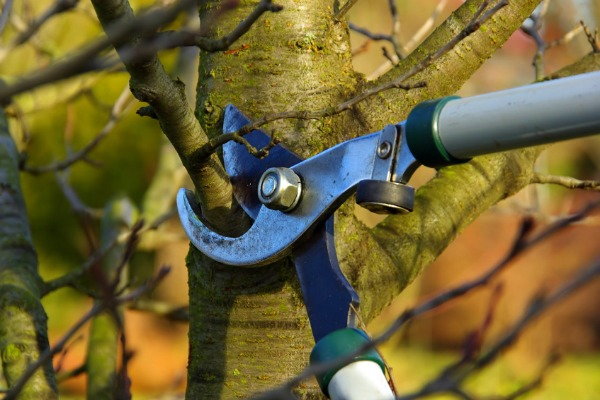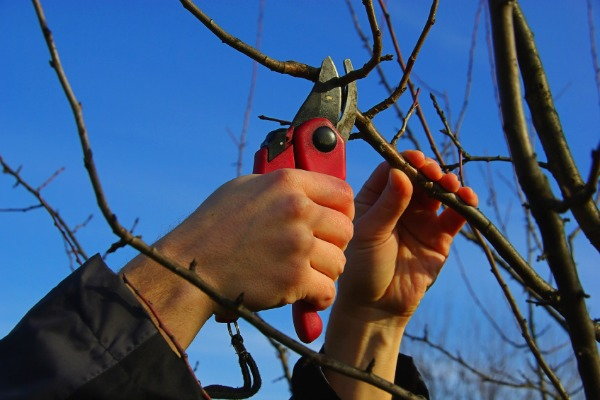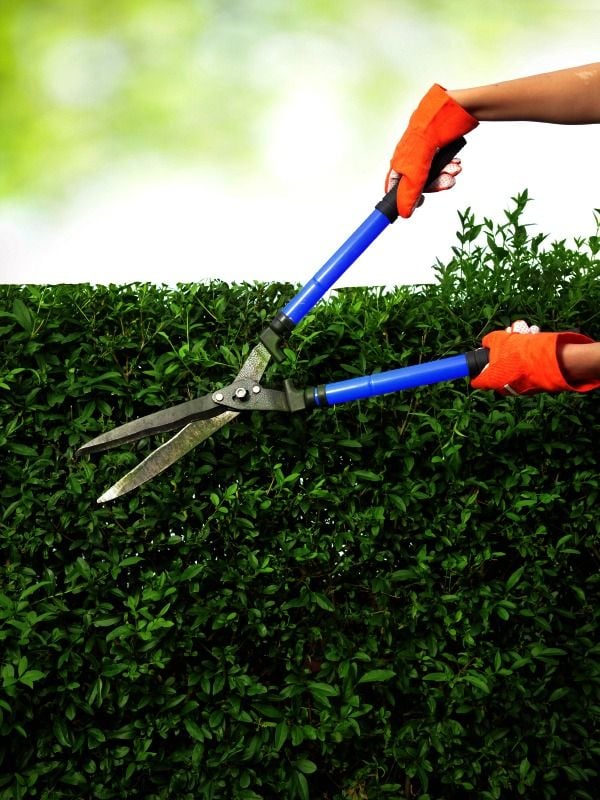Pruning is a horticultural art form. While we prune plants for a host of reasons, not the least of which are trimming, removing dead growth, shaping, cutting for transplanting or the collection of flowers, one need only to look at the practice of bonsai, the method of miniaturizing any tree, and it’s clear how artful it can be. In other words, pruning is not simply the indiscriminate removal of branches, but the appropriate removal of the appropriate branches in an appropriate manner, with the appropriate tool, minimizing the potential damage to a plant.
As there are different types, or perhaps more accurately different reasons for pruning, so there are different tools with which to prune.
The Lopper
The lopper is a large tool used for lopping off or pruning twigs and branches of trees and large shrubs up to 2 inches in diameter. They look like pruning shears with long handles, designed to be operated with two hands, which enables one to get a good amount of leverage to cut and trim the thicker branches in larger shrubs and trees. Typically one blade is concave, which helps to keep the branch that is being cut from slipping out of the cutting surface, and they are generally manually loaded meaning the user opens and closes the blades.

There are two types of loppers, bypass and anvil. The bypass loppers have blades that move past each other, functioning like a scissors, they allow for smooth clean cuts. Anvil loppers, as the name suggests, have a single sharpened blade that moves across an anvil like blade. The main advantage of this style of lopper is its strength, although it tends to crush rather than cut and can leave an ugly wound in a tree leaving it subject to disease.
As with any tool, manufacturers are always looking to improve its function. Loppers are available today with ratchet and gear technology enabling them to cut extra large limbs and making them easier to operate—some even with shock-absorbing bumpers. A ratchet style manufacturer even boasts technological advances of its loppers will increase leverage so much that it will facilitate ease of use for people with arthritis or carpal tunnel problems.
The Pruner
By contrast pruners are small hand held tool for use on smaller plants and shrubs. Sometimes called secateurs, they are designed to be operated with one hand and so pruners are spring loaded. By having a spring between the blades, these pruners open automatically after each cut, and are held closed my means of a locking mechanism. Leverage is minimized, but some pruners are strong enough to cut through branches of up to about an inch.

As with loppers there are the anvil and bypass pruners, and as with loppers one of the blades is typically concave. Anvil style pruners are more useful for cutting the thicker branches, while bypass pruners, which work similarly to scissors with the two blades bypassing each other, are useful for pruning thinner branches requiring smoother cuts such as trimming flowers.
The Shears

There are also pruning shears that look like straight-bladed scissors with a spring between the blades, typically used more delicate pruning requiring limited leverage. They’re a two handed tool built more for speed than strength and they’re good for shaping large areas of small growth, like putting the shape onto a hedge.
Moral of Story
Avid gardeners often have both anvil and bypass pruners, which allow them to tackle most any pruning job. The delicacy of the job will dictate the style and the tool, however purchasing the best quality tool you can afford will help make the job easier. Better tools are more durable, they last longer, the cutting edges will remain sharper longer, and some pruners are manufactured so worn parts can be replaced, eliminating the necessity to purchase a new pruner. In fact one manufacturer suggests that the purchase of its pruners is like purchasing a family heirloom.
Lopper vs Pruner vs Shears FAQ
What do you use lopping shears for?
Loppers, or lopping shears, have long handles and fixed blades. This tool is typically used to prune thick branches that are difficult to cut with hand shears.
The long handles make it possible to use loppers to prune tall trees and plants. The length makes it easier to get to other hard-to-reach landscaping areas.
What is the difference between a hedge shear and a lopper?
Shears are typically hand-operated and made with short- to medium-sized handles and blades. Shears have two long cutting blades and a classic X-shape design, with handles and blades that move back and forth along a fixed central axis.
Shears are, functionally, large scissors that are made to trim leaves, stems, and small branches of outdoor trees and plants.
Loppers have long handles and shorter blades that are designed to take on thicker branches. The long handles also allow loppers to reach places that shears cannot reach.
Which tool is best for pruning?
Pruning tools come in different sizes and designs because they are made for different types of pruning tasks. Professional landscapers and avid gardeners use multiple pruning tools in order to shape their landscaping and trim away dead and dying areas of plants.
Even homeowners with limited pruning needs may need to use multiple tools in order to shape and trim plants and trees. A sturdy pair of shears, a lopper, and a small pair of pruners is a fairly basic pruning kit.
Are pruners the same as shears?
Shears have thin, needle-shaped tips and short blades that are used for harvesting flowers, fruits, and herbs. This is not a pruning tool so much as a small, handheld harvesting tool for the garden.
Pruners have larger, long blades and handles and they are designed to prune away areas of dead and dying plants.
How do you prune a tree that is too tall?
Pruning can be a good way to size down trees that are growig too tall or too wide, and it may be necessary to get rid of dead limbs or invasive vines that may be growing on trees.
However, tree pruning can be dangerous and often requires special equipment because you need to have a way to access the tallest part of the tree.
Looking for more pruning tips? Check out “Hands on With Doityourself.com: Pruning.”

